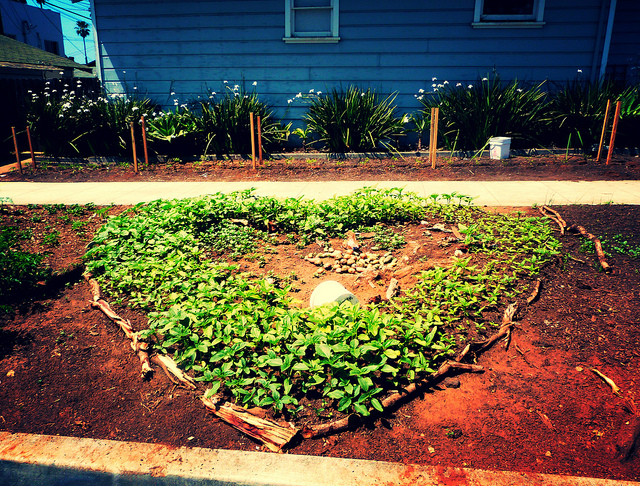
The virtues of organic food are increasingly being recognized globally. And agro-ecological farming, a method developed out of necessity in Cuba, is a farming philosophy that appreciates nature as wise in its chemical-free, organic diversity.
Agro-ecology is the opposite of the current corporate food system because it shuns the mono cash crop grown with chemicals and pesticide, which is then transported for long distances.
Instead, by nurturing soil fertility, agro-ecology grows a wide range of seasonal crops. And by matching farming to the needs, climate, geography, biodiversity and aspirations of a community, agro-ecology develops local expertise so that these farmers are not disposable. They are valued and treated with dignity.
Currently, most food is the domain of those able to afford it, while poor people are consigned to the domain of non-nutritious, processed foods full of cheap calories. For example, in Mexico many teenagers are bloated as never before. The crucial factor in their swelling is proximity to the U.S. border and to the sugar and fat-rich processed food of the United States! (1)
But, although consumers are subject to the market power of corporations, consumers can also shape the market. As the saying goes, “If wishes were horses, beggars would ride.”
Moving toward a just market so that all consumers can access healthy, fresh food begins by supporting living wages, decent working conditions, and sustainable, local food wherever one lives on the planet.
The next step is to realize that corporate agribusinesses are often subsidized—and therein lies the key to a green transformation: we need to pressure our governments to cut off subsidies to agribusinesses and to cut off industrial farming and its transportation from subsidized fossil and biofuels! (2)
Furthermore, there is a need for more anti-trust legislation.
The monopolies that exploit consumers need to be checked. And the full cost of past industrial farming’s environmental and public health cost should be taxed to reflect the harm its processing and transportation has done to all forms of life and to the earth itself—along with the atmosphere. The unsustainable levels of energy and water used by industrial farming have contributed to global warming.
There is already some pressure on governments to curb the power of agribusinesses. Their products are beginning to be removed from schools in the United States and Canada. Harmful additives like trans-fats are being banned in New York and other states. But so much more needs to be done.
Farmers themselves need to organize collectively in order to have a bargaining position. Unionization helps, for concessions have rarely been given freely.
When united, farmers have bargained; when divided, they have begged.
Another way is to form worker-owned cooperatives; these are on the rise globally, offering a fine model of economic democracy. (For example: “A Successful Organic Farming Movement in Brazil”.)
Closer to home, there was an effort in South Central Los Angeles eight years ago that was working well in an area that had been afflicted by gangs. The small, working class Central Alameda community (3) created an oasis of gardens in the urban jungle (4). They grew strawberries, onions, corn, black beans, pomegranate and a hundred other plants and fruit trees. These gardens had spaces to socialize and created a quiet and safe space in the urban zone.
This was a spontaneous occupation five years before Occupy Wall Street and Occupy Los Angeles, inspired by the environmental justice movement as a protest against rampant overdevelopment, industrialization, anti-immigrant sentiment and commercial food monopolies.
On this 14-acre plot people farmed, ate what they grew, and pitched their tents. But eventually sheriffs raided the Farm, bulldozed the food and trees, and arrested 44 people.
However, the Farmers pledged that, although displaced, they would continue the fight for their community’s right to grow fresh food. Currently, banners attached to the fenced off land say, “We are still here,” and the community awaits a proposed hearing with the LA Planning Commission to save the SCF land.
These cooperative organic farming attempts are transformative in more ways than one, whether or not they are successful. As Cesar Chavez, co-founder of the National Farm Workers Association, said in 1984,
“We were fighting for our dignity…we were challenging and overcoming injustice…we were empowering….Once social change begins, it cannot be reversed. You cannot uneducated the person who has learned to read.”
And Cesar Chavez knew this from his experience of being born Latino in Arizona, working on farms in California, and rising to be a labor leader and civil rights activist before co-founding the NFWA.
Another vital and comprehensive response to the corporate world’s food system can trace its origins to Via Campesina, which came up with the vision of “food sovereignty.” Authored by the peasants directly hurt by industrial agriculture, food sovereignty aims to redress the abuse of the powerless by the powerful, laying particular emphasis on the rights of women farmers who, in the Global South, grow 60-80 percent of the food, yet own less than 2 percent of the land.
But becoming sovereign is relevant to the Global North as well, for it involves re-examining our impulse choices and not buying the sugar, salt, fat and flesh processed by the industrial food system.
It begins individually, with learning at least to eat, if not also to farm, with the seasons. But if one does farm, one discovers it to be great exercise. In celebrating this local, fresh food that has not been processed and transported over long distances, one discovers that seasonal, home-cooked, organic food is so much more flavorful and healthy than its industrially processed counterpart. Plus, it not only tastes better, but it costs less and has a much smaller carbon footprint.
And this organic, agro-ecological farming can feed the world—locally!
But one doesn’t need to own land to do it. Britain’s Guerilla Gardeners have turned public spaces even in the heart of London into sources of organic food (5). This volunteer organization began in 2004 with illicit cultivation around London. It saw that public spaces were few and that those that existed were neglected. Motivated by a desire to save trees and transform ugly city spaces into places to grow beautiful and tasty plants, the Guerilla Gardeners have been a success.
Another great way to support organic, local farms is by supporting Farmers’ Markets, which are experiencing a huge renaissance throughout North America because they are full of colorful seasonal produce that usually costs a third less than the produce in supermarkets. Instead of supporting sterile, processed, heavily transported food, one is supporting a diverse selection of healthy food—while getting to know the local farmers! (6)
Community Supported Agriculture (CSA) is another successful alternative to industrial agriculture and is an increasing success in North America. CSA involves a contract between the local farm and the consumer for a weekly basket delivery of whatever is in season. The farmer delivers the food directly to the consumer. Sometimes the farmer will deliver the baskets to a place of work, if many there want the weekly delivery. Occasionally the food is brought to a central location where customers can pick up their baskets. Whichever the delivery mode, it ensures fewer miles are traveled between grower and eater. And the energy used in refrigeration and long-distance transport is saved, generating less waste, less air pollution, and less water. And CSAs reduce or even eliminate the need for customers to drive to supermarkets.
Not only do CSAs demonstrate care for the environment and sustainability, they are better for the local economy, for the money gets recycled back into the community to be spent on local goods.
Agro-ecology promises to feed us sustainably in a variety of ways.
These are only a few of the innovative and diverse solutions, which contrast sharply to the industrial monocultures owned by corporations throughout the world.
~
Sources:
(1) See Stuffed and Starved, by Raj Patel, which explains the steps from seed to store to plate to regaining control of the global food economy and to stopping the exploitation of both farmers and consumers.
(2) stuffedandstarved.org or rajpatel.org
(3) Alameda is Spanish for tree-lined avenue, and this is part of what the community was trying to recreate.
(6) For a list of agro-ecological organizations and their markets see: rajpatel.org or stuffedandstarved.org
Author: Linda Lewis
Editor: Emily Bartran
Photo: Mechanoid Dolly/Flickr










Read 2 comments and reply